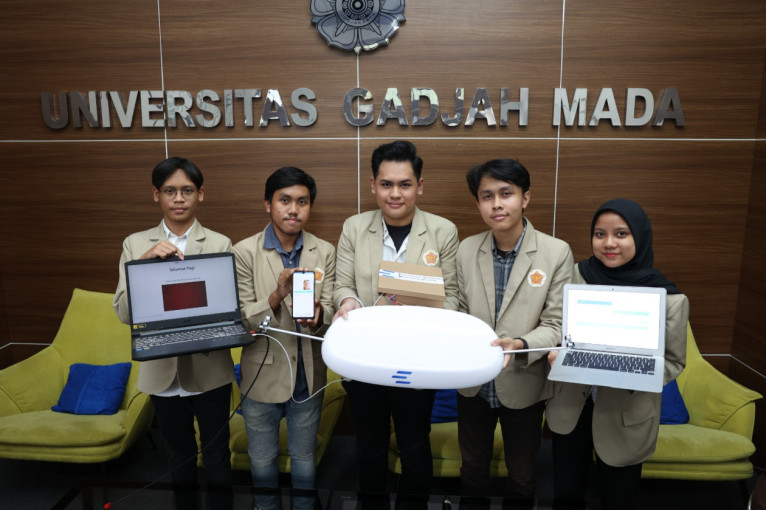
UGM students have developed an early detection tool for stunting based on artificial intelligence (AI).
The stunting detection tool, named Electronic Stunting Detection System (ESDS), is designed to be integrated with an information system and a smartphone application.
The head of the ESDS development team, A.A. Gde Yogi Pramana (IUP in Electronics and Instrumentation), explained that this tool can quickly measure the weight and length of babies. Moreover, the device can automatically store the measurement results as data in the integrated application.
This allows the periodic monitoring of growth and development to detect signs of stunting in children under two years old with the help of machine learning.
“The AI-based ESDS is designed to save time and minimize measurement errors due to human factors still using conventional measuring tools,” Pramana said on Monday (November 20).
Pramana developed ESDS together with four colleagues: Haidar Muhammad Zidan (IUP in Electronics and Instrumentation), Faiz Ihza Permana (Biomedical Engineering), Ichsan Dwinanda Handika (Biomedical Engineering), and Salsa Novalimah (Nutrition and Health).
The tool was developed through a grant from the Ministry of Research and has successfully advanced to the 2023 National Student Scientific Week (PIMNAS).
He expressed that the development of ESDS started from their concern about the high stunting cases in the country. Health cadres in the community have carried out early detection of stunting in children under two years old through integrated health posts (posyandu).
However, there are often errors in the accuracy of measurement of children’s growth caused by the cadres’ lack of skills and the incompatibility of measuring tools with anthropometric standards.
Measurements of children under two years old are usually done using an infantometer board and a scale. The length is measured using makeshift tools in posyandu that don’t have it.
This makes the measurement results inaccurate because the tools used do not comply with the anthropometric standards for children under two years old.
“When using a manual swing-type scale, the weighing process is often inaccurate because the baby feels uncomfortable and moves a lot,” Pramana explained.
“In addition, the calibration process of the scales is often done by adding pebbles placed in plastic bags tied to the end of the swing scale to ensure that the scale is precisely at the zero point, making the tool prone to measurement errors.”
ESDS results from the development of a previous product with modifications to the information system framework used, namely CodeIgniter.
This product is integrated with an information system available in the form of a web application and a mobile application that displays information on child development, nutrition status in two-year-old babies, indications of stunting or not in children, simple nutrition-related education for children, and a history of child development.
The digital recording method can speed up the data updating with a real-time centralized database.
“This tool is integrated with a web application to control the measuring tool for cadres who perform anthropometry and display pages for baby registration,” he explained.
Faiz Permana added that the SMOTE-ENN algorithm is used to decide whether a child is indicated as stunted, which is integrated with Ensemble Learning.
This algorithm has advantages compared to other algorithms, namely training on data only when predicting a sample, allowing the algorithm to run faster.
Thus, Ensemble Learning can classify test samples based on dynamic data, such as stunting measurement data that continues to increase with each measurement.
When a toddler is weighed on the tool’s surface or the provided area, the high-precision load cell sensor will read the measured or considered value. The reading results will be calibrated using linear regression to obtain the calibration factor.
Then, the LCD will display measurement results in the form of quantitative data, an interpretation of the weight and length of the measured baby.
Salsa Novalimah said that the presence of ESDS in the future will make it easier for users to detect stunting early and independent monitoring for parents with two-year-old babies.
This early detection and independent monitoring are expected to help the government accelerate the reduction of stunting prevalence in Indonesia to 14%.
“From the Indonesian Nutrition Status Survey (SSGI) in 2022, the prevalence of stunting in children under five years old is still high, at 21.6%. Hopefully, the presence of this tool can help early detection of stunting, thus encouraging the acceleration of stunting reduction in the country,” she hoped.
Author: Ika
Photographer: Firsto

